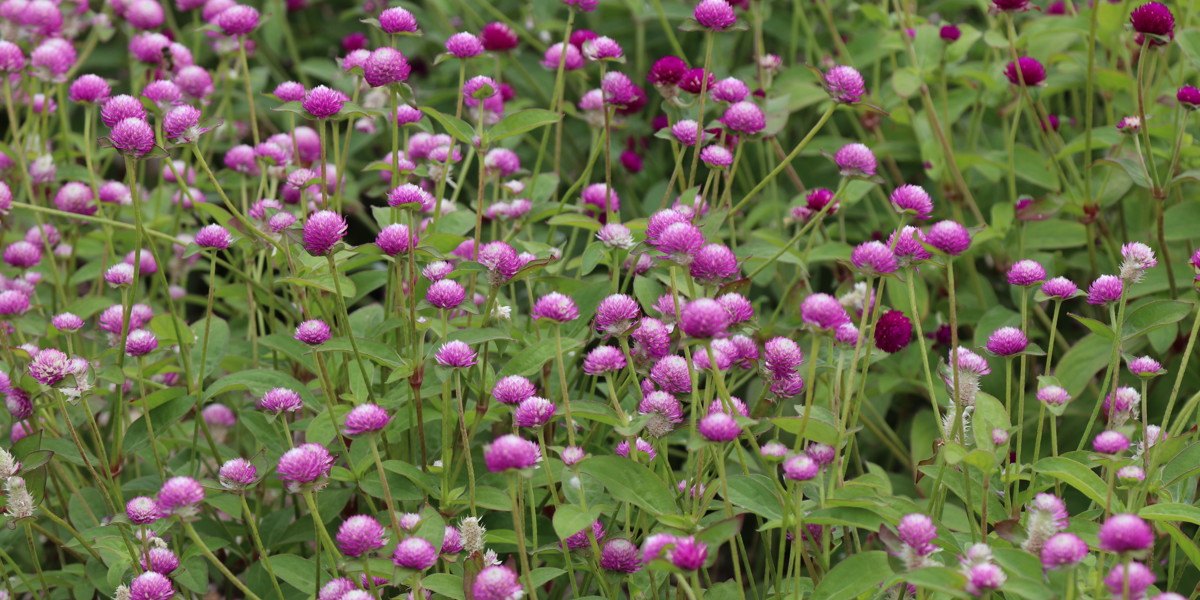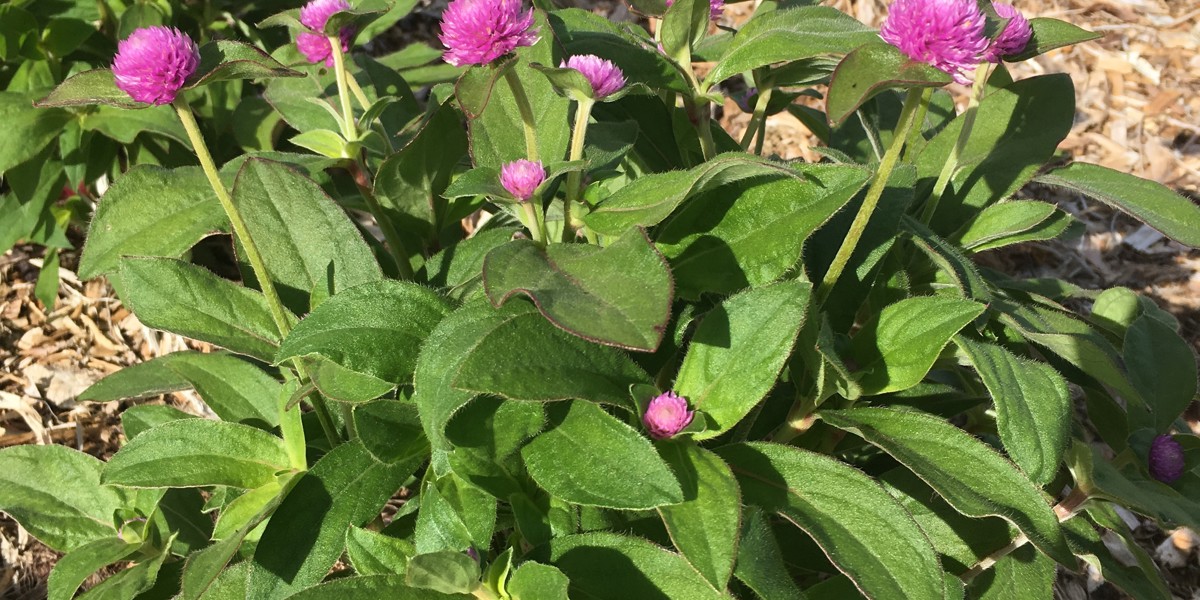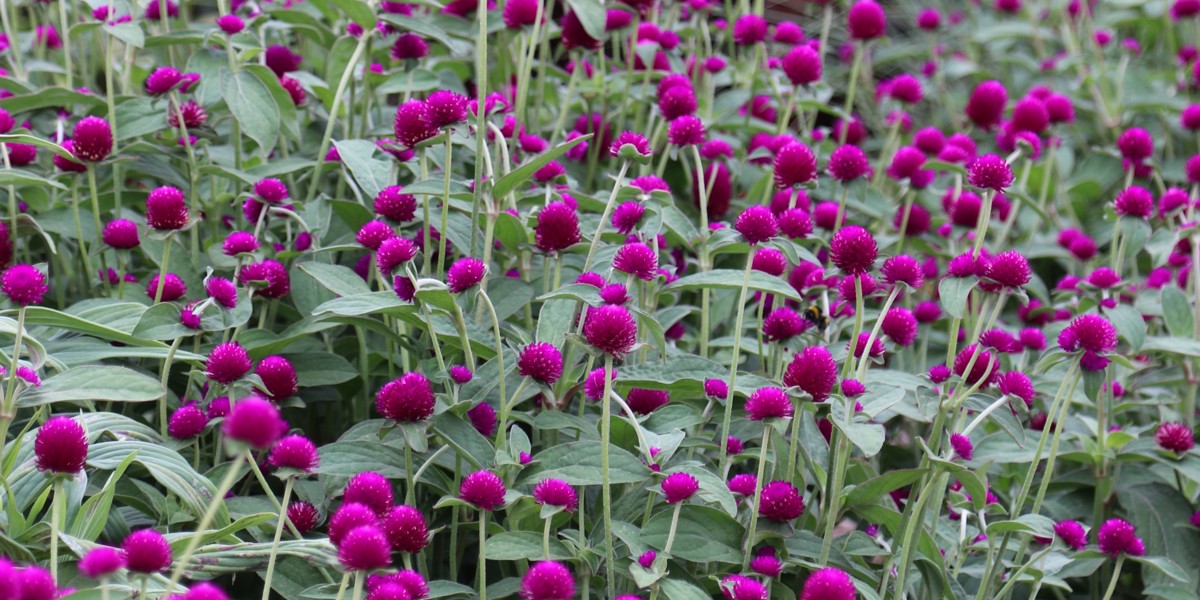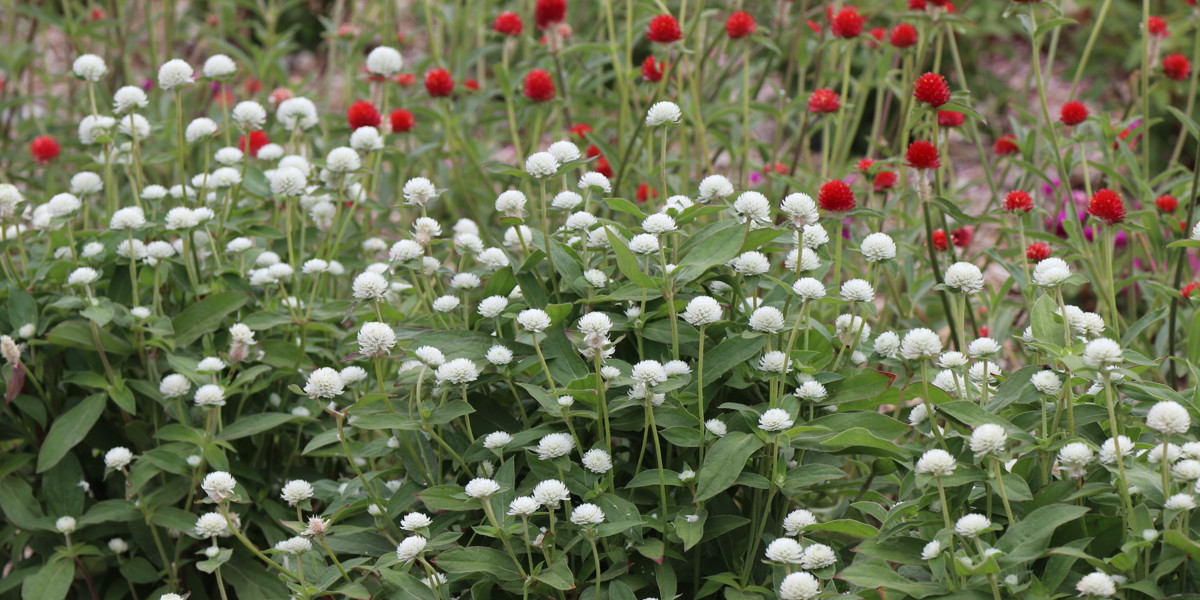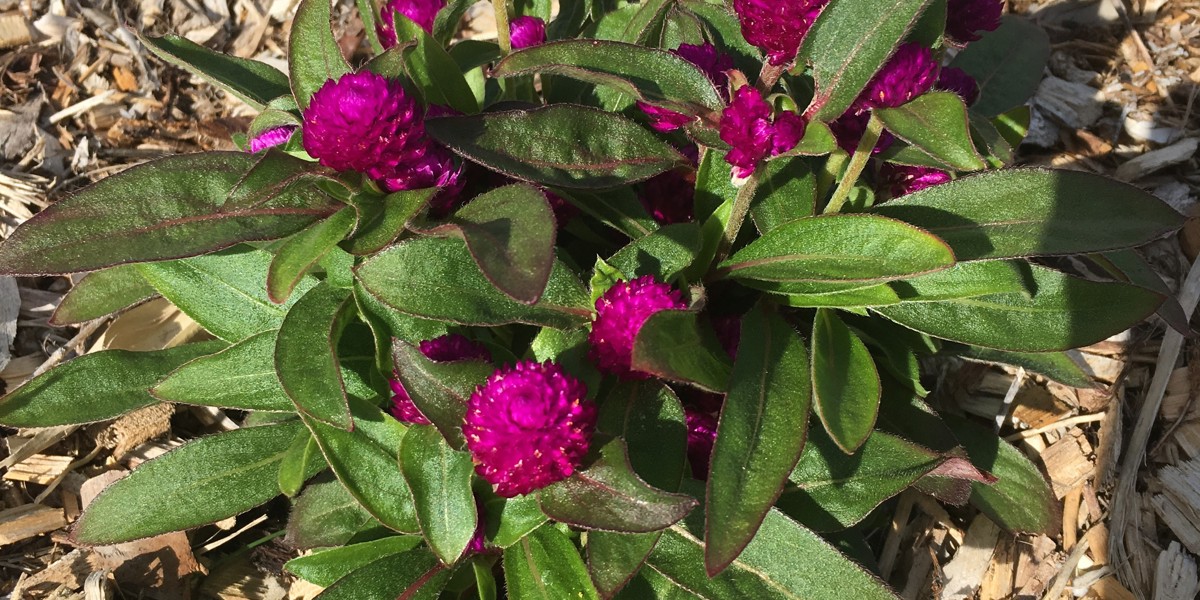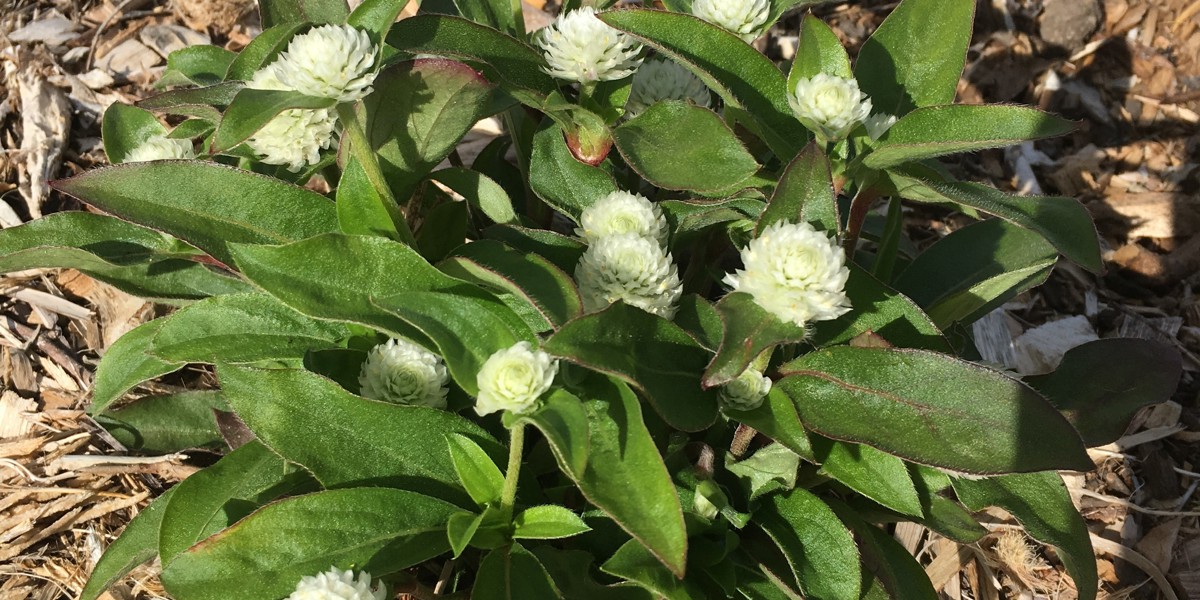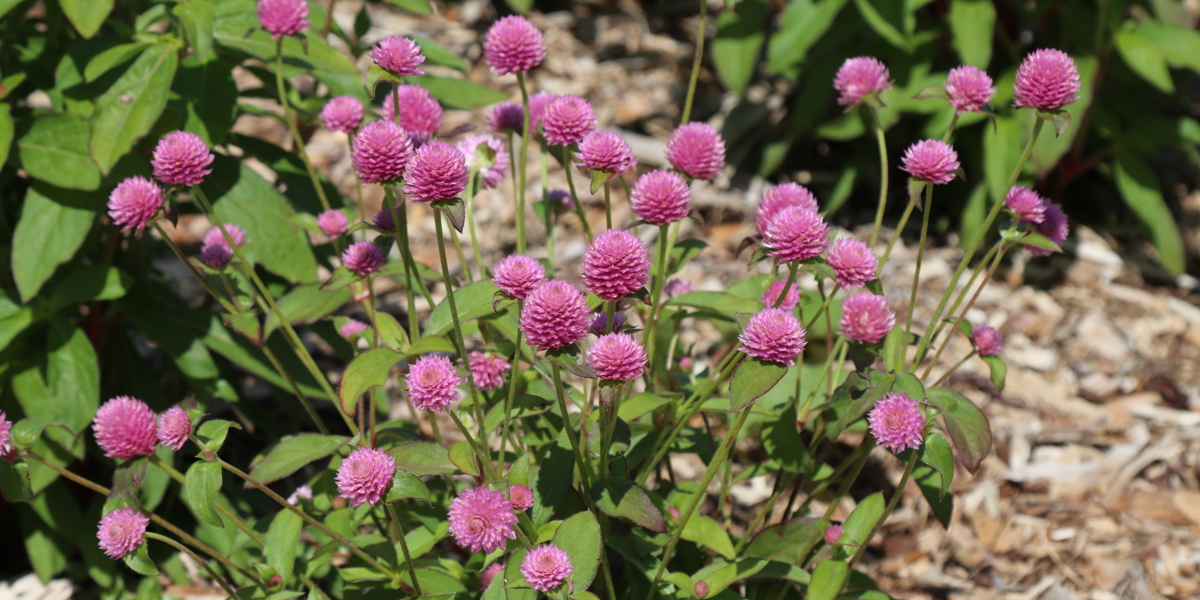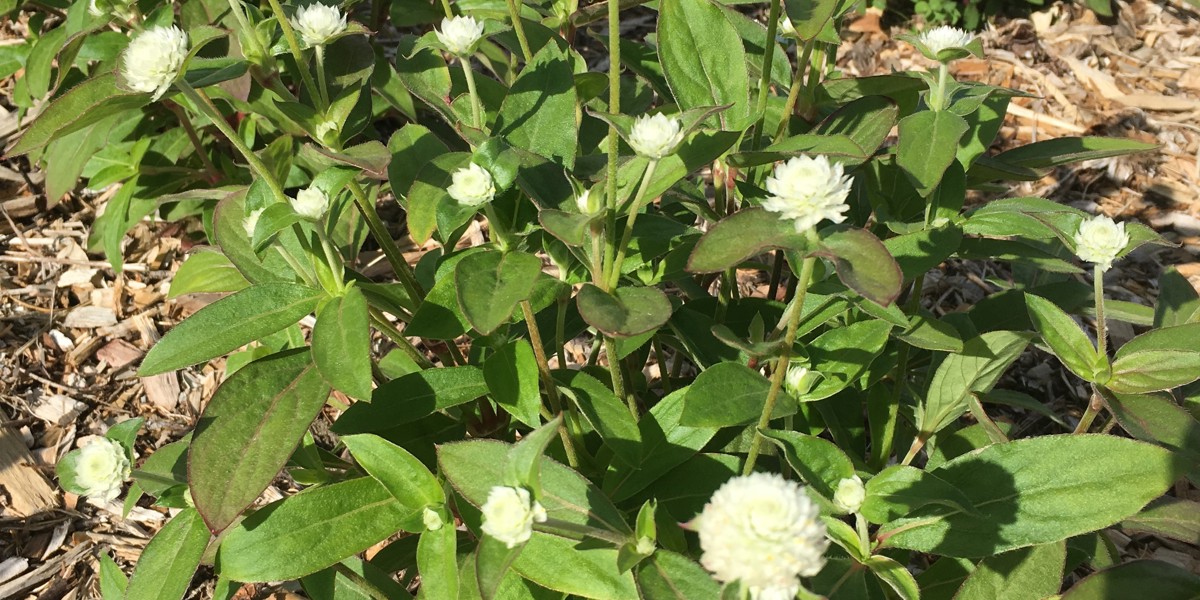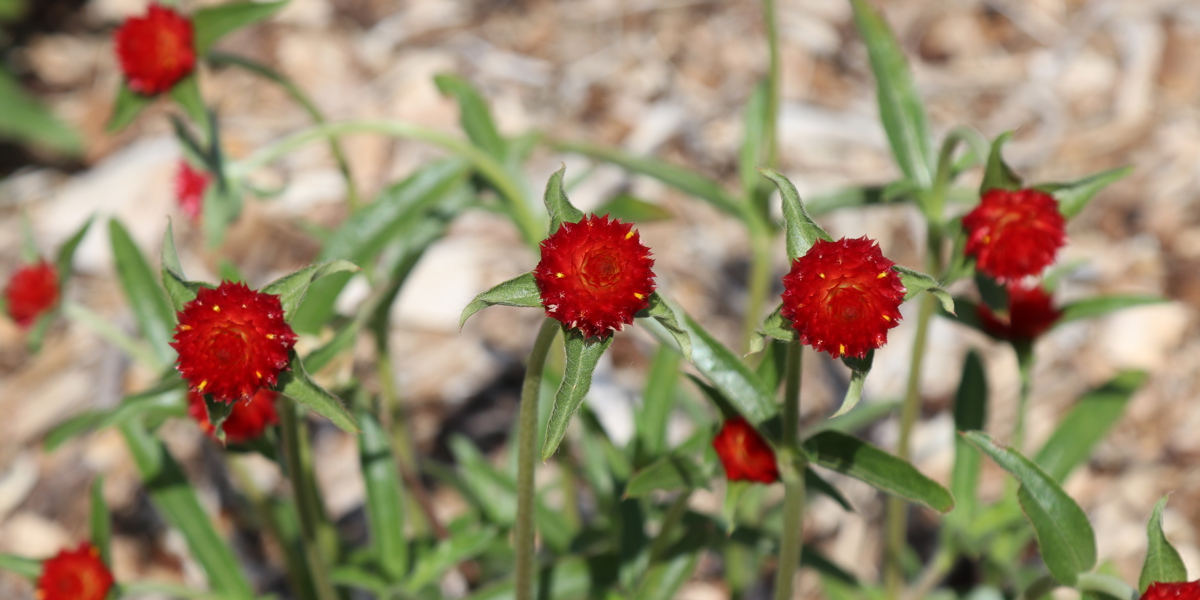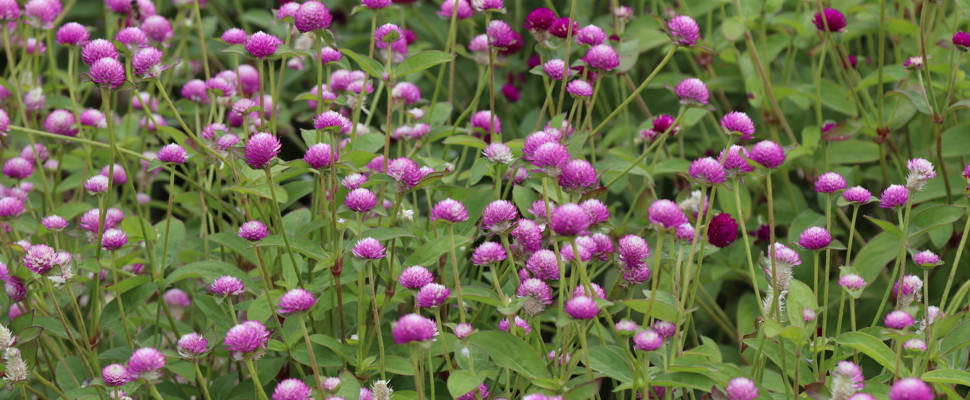
Gomphrena for mass plantings
Summer annual trial 2018-19
Introduction
At Auckland Botanic Garden (ABG) we make two main plantings in our annual beds each year, one in autumn for winter/spring display, the other in early summer for summer/autumn colour. By comparison, some other public gardens plant annual beds three times a year. We, therefore, require high performing annuals with long flowering periods. We also look for minimal maintenance and healthy plants that don’t require pesticides. Ideally, they should self-groom (shed their spent flower heads) and have dense habits that suppress weed growth. Plants undergo assessment in our trial garden to indicate their performance in highly visible mass planted beds.
There are approximately 133 species in the Gomphrena genus with its native range from central Malesia to Australia, Tropical and Subtropical America. Only two or three species have been used to develop cultivars. Gomphrena globosa L., commonly known as globe amaranth, is native to Central America, and widely grown in milder regions of the world. In cultivation, it is a compact annual with striking round flower heads (inflorescences). Gomphrena haageana Klotzsch, the Rio Grande globe amaranth, is a taller species with a wider, more open habit compared to G. globosa.
Selections of Gomphrena have been bred with showy bracts in shades of white, pink, lilac, red, magenta, purple, and orange. The true flowers are tiny and hidden within the flower heads. Gomphrena have few pest or disease issues and are excellent as dried flower heads because the bracts hold their colours well. In the summer of 2017–2018, we grew G. globosa ‘Bicolour Rose’ and G. haageana ‘Strawberry Fields’ as fillers in the perennial garden which captured the interest of many visitors.
The aim of this trial was to identify high performing Gomphrena for summer bedding that profusely flower for 5–6 months, have flower bracts that do not fade or need deadheading, provide effective ground cover, have a high survival rate, are low maintenance, and pest and disease-free.
Methods
Nine cultivars of Gomphrena, purchased as seed from Egmont Seeds, Owairaka Seeds and Bunnings, were sown in the ABG nursery. Ten plants of each cultivar were planted into the trial garden on November 2nd, 2018 at 450 mm spacing. Compost was added to the soil prior to planting and all plants were deadheaded at the time of planting. Plants were watered only three times during the trial.
Weekly flowering records were recorded using a flowering scale (0 = nothing, 1 = buds, 2 = flowers, 3 = seed). Once a month all plants were checked for pests or diseases. When plants were at maturity, average height and width measurements (cm) and comments about plant habit were recorded. Height was measured from soil level to the highest point on each plant including flower heads, and the width was measured across the widest part of the foliage. Flower head colour was recorded using the Royal Horticultural Society (RHS) colour chart. An evaluation by a group of staff was conducted in mid-February to assess plants overall and rate them according to ABG star performer criteria (1 = poor performer to 10 = excellent performer). Cultivars that scored 8 or more were considered top performers and are recommended for Auckland conditions based on the results of these trials. Overall rating took into consideration flowering period, mix of colours, absence of pests and diseases, habit and vigour.
Plants were removed at the completion of the trial in early April 2019.
Results
In Table 1 we present the results of our Gomphrena trial. All cultivars were free of pests and diseases throughout the trial. One plant each of G. ‘Audray White’ and G. ‘Buddy White’ died during late December. There was no colour fading of flower heads or leaf scorching. G. ‘Audray Bicolour Rose’, G. ‘Buddy Purple’ and G. ‘Buddy White’ started flowering the first week of December, a week before all other cultivars started flowering. G. ‘Audray Bicolour Rose’ flower heads started to look spent in mid-February, but a few flower heads persisted until the end of March.
Table 1 Summary of 9 Gomphrena cultivars in the trial with an overall performance rating. Cultivars with an overall rating of 8 or higher are recommended as top performers and indicated by asterisks.
|
Gomphrena cultivar |
Flowering period and flower head colour (RHS chart) |
Habit |
Height × width of foliage (cm) |
Overall rating |
|
G. globosa ‘Audray Bicolour Rose’ (Fig. 1) |
Early Dec to end of March. Purple group N78B with paler centre to white. |
Very upright, vigorous growth |
43 × 36 |
8* |
|
G. globosa ‘Audray Pink’ (Fig. 2) |
Mid Dec to end of March. Red purple group 72D. |
Upright, slightly variable in height |
46 × 35 |
8* |
|
G. globosa ‘Audray Purple Red’ (Fig. 3) |
Mid Dec to end of March. Purple group N78A. |
Bushy, uniform, vigorous growth |
52 × 40 |
9* |
|
G. globosa ‘Audray White’ (Fig. 4) |
Mid Dec to end of March. White group 155C. |
Upright |
45 × 33 |
9* |
|
G. globosa ‘Buddy Purple’ (Fig. 5) |
Early Dec to end of March. Purple group N78A. |
Very small and compact |
14 × 18 |
6 |
|
G. globosa ‘Buddy White’ (Fig. 6) |
Early Dec to end of March. White group 155C. |
Very small and compact |
18 × 22 |
6 |
|
G. globosa ‘QIS Salmon’ (Fig. 7) |
Mid Dec to end of March. Red purple group 62B. |
Tall, open |
53 × 40 |
7 |
|
G. globosa ‘QIS White’ (Fig. 8) |
Mid Dec to end of March. White group 155C. |
Wider habit than G. ‘Audray White’ |
53 × 45 |
7 |
|
G. haageana ‘Strawberry Fields’ (Fig. 9) |
Mid Dec to end of March. Red group 45A. |
Tall, open |
54 × 37 |
8* |
Conclusions
We assessed G. ‘Audray Bicolour Rose’, G. ‘Audray Pink’, G. ‘Audray Purple Red’, G. ‘Audray White’ and G. ‘Strawberry Fields’ as top performers and recommend them for planting in high impact mass displays. It should be noted that G. ‘Strawberry Fields’ may not be as successful in suppressing weeds as other cultivars due to its open, non-bushy habit. These plants required no maintenance such as deadheading.
Gomphrena ‘Buddy Purple’ and G. ‘Buddy White’ are low growing compact cultivars which would be best suited to pots or containers. For annual bedding, they do not create the size and impact that is desired in mass flowering displays.
References
Gaddum, M. (2001). The Trade Plant Finder 2001. New Zealand Plant Finder, Gisborne. 332 p.
Websites (accessed May 2019)
Kew Science: Plants of the World Online: Gomphrena
Missouri Botanical Garden: Plant Finder: Gomphrena globosa
Missouri Botanical Garden: Plant Finder: Gomphrena haageana
The Plant List: Gomphrena
This article cannot be republished elsewhere without consent from Auckland Botanic Gardens.
